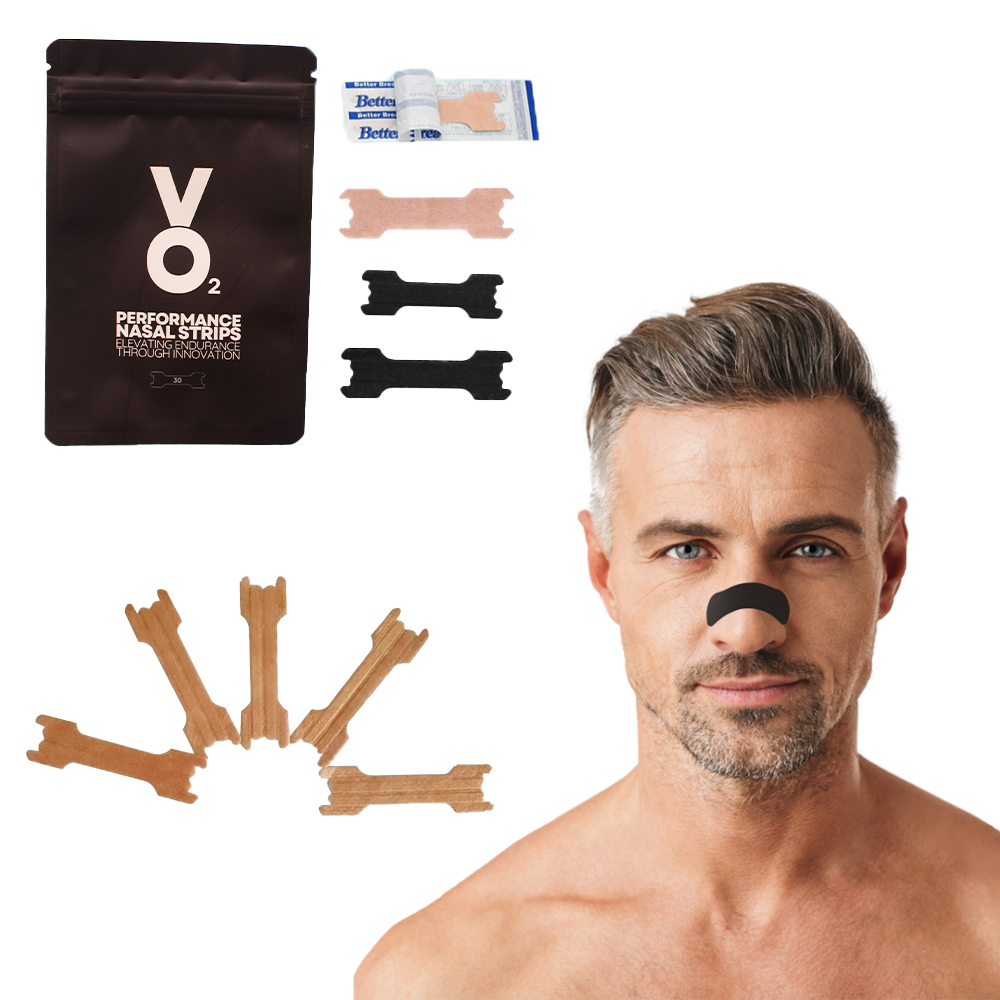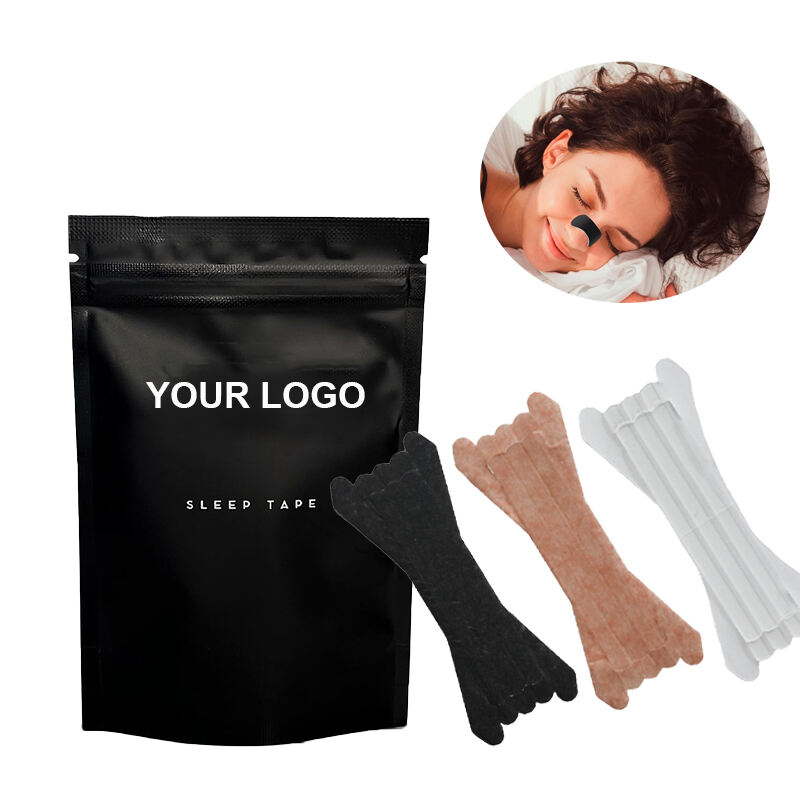Understanding the Science Behind Nasal Strip Technology
Nasal strips have revolutionized the way people address breathing difficulties during sleep and physical activities. These simple yet innovative adhesive bands work by gently pulling open the nasal passages, allowing for increased airflow and easier breathing. The mechanical action of nasal strips creates an immediate improvement in nasal breathing by physically lifting the sides of the nose, which can reduce snoring and enhance athletic performance.
Preparation and Application Techniques
Essential Pre-Application Steps
The success of nasal strips largely depends on proper preparation of the nasal area. Start by thoroughly cleaning your nose with mild soap and warm water, removing any oils, lotions, or moisturizers. Pat the area completely dry, as any residual moisture can prevent proper adhesion. For those with sensitive skin, waiting a few minutes after washing allows the natural skin barrier to resettle.
Many users make the mistake of rushing through the preparation phase, leading to poor strip performance. Taking these extra moments ensures optimal adhesion and prevents the strip from peeling off during sleep or activity. If you wear makeup, ensure the nasal area is completely bare before application.
Mastering the Application Process
Position yourself in front of a well-lit mirror and remove the nasal strip from its packaging. Identify the adhesive side and carefully peel off the protective backing. The ideal placement point is just above the flare of the nostrils, where the bones of the nose meet the cartilage. This location maximizes the lifting action of the strip.
Press down firmly on the center of the strip first, then smooth outward toward each end. Apply pressure across the entire surface to ensure complete contact with the skin. Some nasal strips feature a special adhesive that becomes more secure with the warmth of your skin, so maintain pressure for about 30 seconds.

Maximizing Benefits Through Proper Wear
Optimal Usage Duration
While nasal strips are safe for extended wear, they perform best when used for specific time periods. During sleep, wear them throughout the night, typically 7-9 hours. For athletic activities, apply them just before your workout or competition and remove them afterward. The adhesive is designed to maintain its effectiveness for these durations while allowing safe removal.
It's important to note that wearing nasal strips for excessive periods can irritate sensitive skin. Listen to your body and adjust wear time accordingly. Some users benefit from taking occasional breaks to let their skin breathe, especially if using the strips nightly.
Environmental Considerations
The effectiveness of nasal strips can be influenced by environmental factors. In humid conditions, the adhesive may need extra time to set properly. For outdoor activities, consider the weather - extreme heat or cold can affect both the adhesive properties and the strip's flexibility. When swimming or engaging in water sports, special water-resistant nasal strips are available.
Safe and Effective Removal Methods
Gentle Removal Techniques
The removal process is just as important as application. Start by thoroughly washing your hands to maintain hygiene. Gently grasp one end of the nasal strip and slowly peel it back toward the center of your nose. Pull horizontally rather than vertically to minimize skin stress. If you encounter resistance, do not force the removal.
For stubborn adhesive, try removing the strip after showering when the skin is warm and more pliable. Some users find that applying a warm, damp washcloth to the strip for a few minutes helps loosen the adhesive. Never pull quickly or forcefully, as this can damage your skin.
Post-Removal Skin Care
After removing the nasal strip, cleanse the area gently to remove any remaining adhesive. Apply a light moisturizer to maintain skin health and prevent dryness. If you notice any redness or irritation, allow your skin to recover for a day before reapplying a new strip. Regular skin care helps maintain the ideal surface for future applications.
Troubleshooting Common Issues
Addressing Adhesion Problems
If your nasal strips frequently peel off during use, several factors might be responsible. Excessive oil production, moisturizer residue, or incomplete skin drying after cleansing can all compromise adhesion. Some users find success by using an alcohol wipe to remove oils just before application, though this should be done cautiously to avoid skin irritation.
Temperature and humidity can also affect adhesion. In very dry conditions, the adhesive might become too brittle, while high humidity can prevent proper bonding. Consider your environment and adjust your application technique accordingly. Some brands offer different adhesive strengths for various conditions.
Managing Skin Sensitivity
For those with sensitive skin, alternating the exact placement position slightly each night can help prevent irritation. Some users benefit from using a skin barrier product, applied and allowed to dry completely before strip application. If persistent sensitivity occurs, consider trying different brands as adhesive formulations vary.
Frequently Asked Questions
How long can I wear nasal strips continuously?
While nasal strips are safe for nightly use, it's recommended to give your skin occasional breaks, especially if you notice any irritation. Most people can safely wear them for 8-10 hours during sleep or throughout athletic activities.
Can I reuse nasal strips?
Nasal strips are designed for single use only. Reusing strips can introduce bacteria to your skin and won't provide the same level of adhesion or breathing benefits. Always use a fresh strip for each application.
Why do my nasal strips sometimes fall off during sleep?
Poor adhesion usually results from inadequate skin preparation, oils on the skin, or incorrect application technique. Ensure your skin is completely clean and dry before application, and press firmly across the entire strip to activate the adhesive properly.
Are there different sizes of nasal strips available?
Yes, most manufacturers offer various sizes to accommodate different nose shapes and sizes. Using the correct size is crucial for optimal performance. If you find the standard size uncomfortable or ineffective, try a different size or brand that better fits your nasal anatomy.

